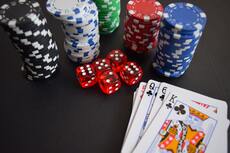A guide on when to use the check raise move in poker

Poker has established itself as one of the nobility if there is such a thing as hierarchy in card games. It is popular at gamers-coalition.com and all over the world and has several versions to its name, not least of which is the Texas Hold 'Em.
There are several moves that can be taken during the game and one of the strongest happens to be the "check raise." However, it is considered deceptive by some players and may even be banned in certain establishments. So be sure to validate the poker house rules before you attempt to do it in a game. Learning how to play poker strategically is highly recommended, especially if you're new to the game. Our favourite site for online poker skills and strategies is vesuviuspoker.com. However, you'll find loads more on the site than the latest tips, including free online poker hold'em sites where you can play games and win real money - all without making a deposit.
So what is this controversial move? The phrase check raise in poker actually describes the two actions involved: checking, which means not betting anything during a round, but with the intention of the second action, raising the bet when another player places a wager during the round. This is considered deceptive since it first lulls the others into thinking you are holding a weak hand, but then blindsiding them with a raised bet, thereby trapping their own bets into the pot.
This is not an easy move to pull off so it is done primarily by more seasoned players. It is an pretty strong bluff, however, and may put the other players off balanced, as well as allows you to bring in more money to the pot, definitely useful especially if you are holding a strong hand. It is however more effective when used with a smaller number of players, and can only be done when you are in the first position. Otherwise, you will just be raising.
To employ the check raise in poker successfully as a bluff, it is good to keep three considerations in mind. First, you must believe that the opponent holds a weak hand. If he does not, he will just keep in raising and calling your bluff. Take note of your opponent's actions and determine his betting habits vis-a-vis his hand.

Second, once you re-raise, do so by at least doubling the amount of your opponent's wager. Doing so will result in two things for him, he will have to call a much higher amount, and he will really have to think harder about actually making that call.
Third, a fairly small pot will help. Aside from helping you with your own bankroll since you may be doing this move with a marginal hand and therefore may need to check after the first raise, a smaller pot makes the opponent's calls much larger in relation to it, more likely giving them wrong or unattractive odds.
As a money-making move however, the check raise in poker is best employed sparingly, primarily when you hold a practically unbeatable hand, and with multiple opponents.




